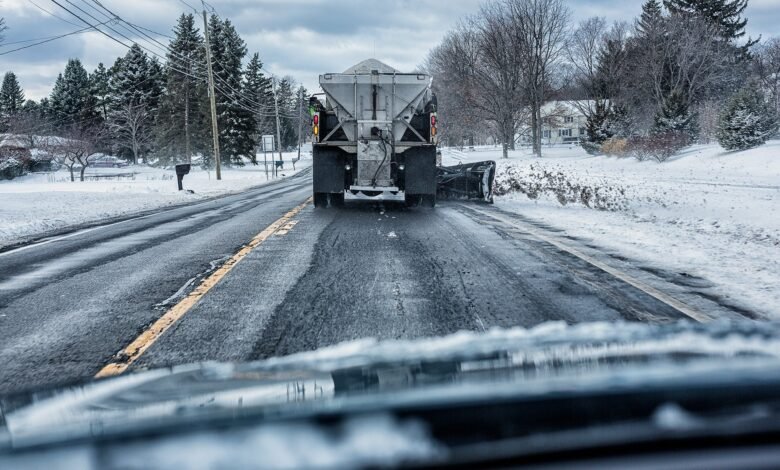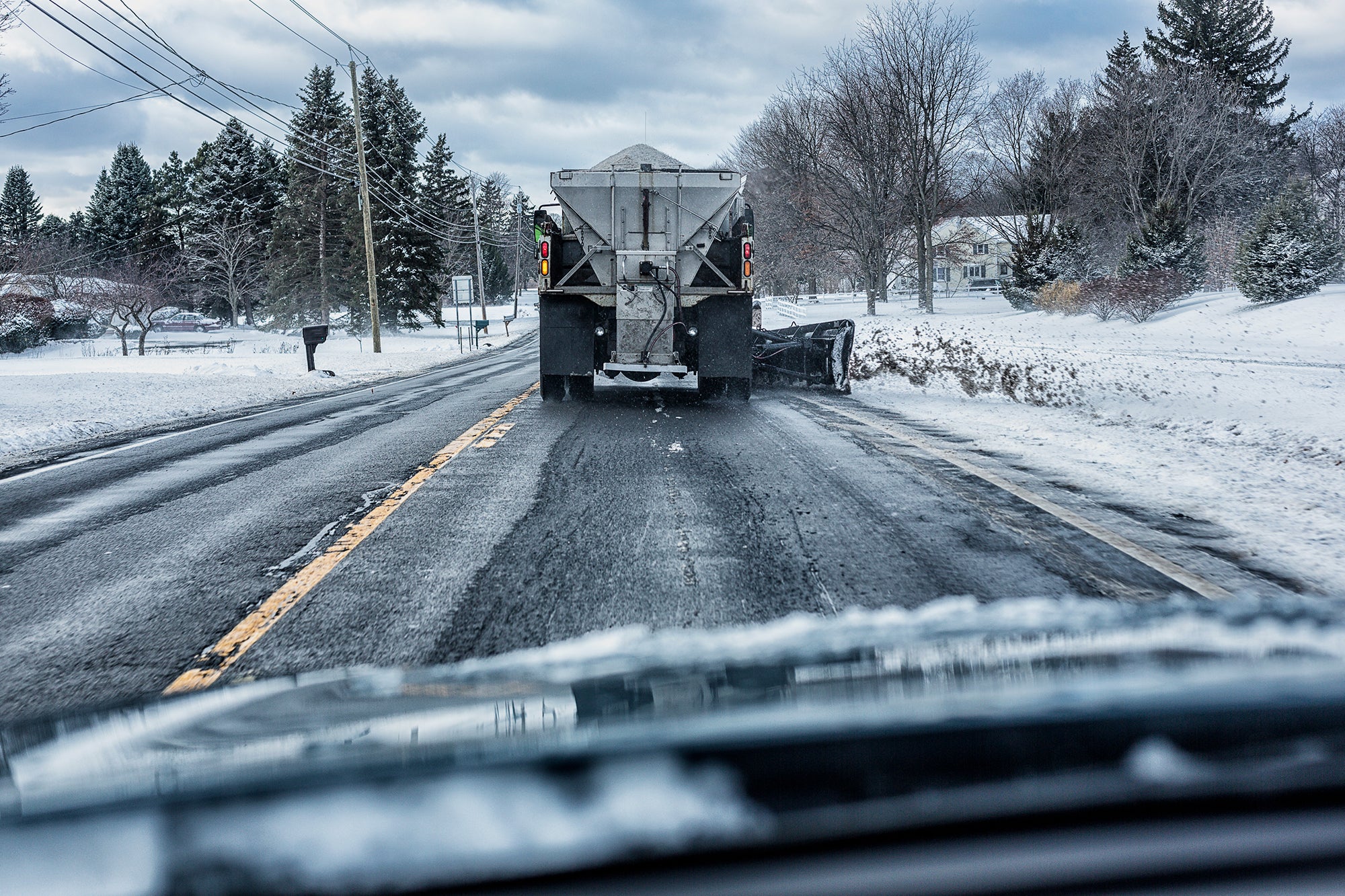

When snow starts hitting the ground, so does a second white crystal: rock salt.
If you live in a region where winter weather is a regular hazard, you are likely used to pouring salt on your sidewalks or watching trucks douse the streets in it. But how does it work? And how much salt do humans dump onto our planet’s surface? The second question is easier to answer: a lot. We covered streets and sidewalks with nearly 23 million metric tons of salt across the U.S. in 2018 alone.
Salt doesn’t directly melt ice, nor does it make snow simply disappear. Instead it makes water less likely to freeze in a phenomenon called freezing point depression. “It basically disrupts the crystal structure that forms in the freezing of the ice,” says Julie Pollock, a chemist at the University of Richmond.
This power comes from the way salt dissolves in water and breaks down into ions: in the case of simple rock salt, which is a rawer, less pure version of table salt, each molecule splits into one ion each of sodium and chloride. Normally, when water freezes into ice, its molecules line up to form a stable, orderly hexagonal structure. Salt ions interfere with that alignment, however, and temperatures must drop lower to overcome that interference and for freezing to occur.
But if salt needs to interact with liquid water, how does it do anything when temperatures are stubbornly below freezing, and water should already be in the form of ice? That’s where cars help clear their own way by creating friction and, in turn, heat, Pollock says. “The friction allows for the ice that has already frozen to melt a little bit, and it makes that sort of slushy material,” she says, which the salt then dissolves in. “That slushy material then doesn’t freeze as easily as just water by itself would.”
Beyond rock salt’s ability to clear icy streets, it can also be destructive. Chloride ions can corrode vehicles and infrastructure. Increasing chloride concentrations in North American lakes could begin to disrupt local ecologies and interfere with sources of drinking water.
“Once road salt gets into the water, it’s very difficult to remove it,” says Chan Lan Chun, an environmental engineer at the University of Minnesota Duluth. “Salt itself is benign—it’s not like a harmful or a hazardous chemical,” she adds. But because the ions salt dissolves into are strongly attracted to water, it can take decades for salt pollution to flush out of an ecosystem. “Once it gets into the water, it doesn’t go away.”
Using rock salt as a brine, or already mixed with water, can reduce the amount needed to keep roads safe, as can using careful calculations to determine how much salt is truly necessary given conditions on the ground.
“Traditionally, folks just threw rock salt down,” says Laura Fay, a research scientist at the Western Transportation Institute at Montana State University. “They just put out as much as they thought they needed. Now there are really fancy plow trucks—almost like a fighter jet when you get in them—that have all these control systems and they can actually set exact application rates” that reduce salt application with minimal safety impacts.
But many state and local governments are also looking for alternatives to rock salt. Other salts such as magnesium chloride and calcium chloride work in the same way as sodium chloride, and they’re perhaps even more efficient. Each molecule of these salts produces three ions—one of either magnesium or calcium plus two of chloride—to interfere with ice formation, while sodium chloride breaks down into only two. But these alternative compounds are more costly than simple rock salt and don’t reduce the negative environmental impact of chloride ions.
Some experiments are testing other ice-preventing solutions, including those that contain dissolved sugars instead of or in addition to salts. “A solution of anything will disrupt the ability of the water to form the ice crystals as easily,” Pollock says, adding that a mixture of different sizes of ions or molecules may be more effective than one of similarly sized components at chemically interfering with the freezing process.
Another approach relies more heavily on sand, which can mechanically make roads safer. “Really what it’s doing is just providing a surface for friction for the tires,” Pollock says. “As you’re driving on it, the sand can push down into ice if ice is already there and breaks ice into smaller pieces, which gives more surface area for the sun to come and melt the ice.”
Chun notes that municipalities and counties should evaluate the potential of local materials, whether that’s cheese brine in Wisconsin or ground-up tree bark in her own state of Minnesota. These materials, she hopes, might have fewer detrimental effects on neighboring ecosystems. “We need innovation, and at the same time, we need to have a little conservation [mindset] as well,” Chun says.
Engineers are also evaluating more dramatic approaches to winter road maintenance, Fay says. Heated pavement is an early-stage option that she finds particularly intriguing. It’s an expensive approach that replaces traditional asphalt roads with concrete surfaces embedded with fibers that conduct electricity and can therefore directly melt snow and ice.
All of this experimentation is aimed at ensuring people can travel in any weather condition—a Herculean task when winter brings its worst, Fay says. “Everybody wants to drive on the road, and they want to be safe,” she says.
Source link




